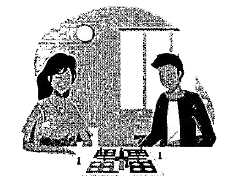Sherlin and Danju are playing Ludo at home during Covid-19. While rolling the dice, Sherlin's sigter Raji observed and noted the possible outcomes of the throw every time belongs to set {1, 2, 3, 4, 5, 6). Let A be the set of players while B be the set of all possible outcomes.

Raji wants to know the number of relations possible from A to B. How many numbers of relations are possible ?
62
26
6!
212
The correct Answer is:D
Topper's Solved these Questions
- RELATIONS AND FUNCTIONS BOOK - ICSECHAPTER - RELATIONS AND FUNCTIONS EXERCISE - MULTIPLE CHOICE QUESTIONS (ASSERTION AND REASON BASED QUESTIONS)
7 Videos
- QUESTION PAPER-2018BOOK - ICSECHAPTER - QUESTION PAPER-2018EXERCISE - Section -C
8 Videos
- SAMPLE PAPER - 4 BOOK - ICSECHAPTER - SAMPLE PAPER - 4 EXERCISE - Questions (Section C)
8 Videos
Similar Questions
Sherlin and Danju are playing Ludo at home during Covid-19. While rolling the dice, Sherlin’s sister Raji observed and noted the possible outcomes of the throw every time belongs to set {1,2,3,4,5,6}. Let A be the set of players while B be the set of all possible outcomes.

A = {S, D}, B = {1,2,3,4,5,6}
Raji wants to know the number of relations possible from A to B. How many numbers of relations are possible?
View SolutionSherlin and Danju are playing Ludo at home during Covid-19. While rolling the dice, Sherlin’s sister Raji observed and noted the possible outcomes of the throw every time belongs to set {1,2,3,4,5,6}. Let A be the set of players while B be the set of all possible outcomes.

A = {S, D}, B = {1,2,3,4,5,6}
Raji wants to know the number of functions from A to B. How many number of functions are possible?
View Solution
Knowledge Check
If n dice are rolled, then number of possible outcomes is:
A6nB6nn!C(n+5)C5DnoneSet of all possible outcomes of an experiment is called its
Auniversal setBsample spaceCpartitionDdomain
Sherlin and Danju are playing Ludo at home during Covid-19. While rolling the dice, Sherlin’s sister Raji observed and noted the possible outcomes of the throw every time belongs to set {1,2,3,4,5,6}. Let A be the set of players while B be the set of all possible outcomes.

A = {S, D}, B = {1,2,3,4,5,6}
Let R:B→B be defined by R={(x,y):y in divisible by x} is
View SolutionSherlin and Danju are playing Ludo at home during Covid-19. While rolling the dice, Sherlin’s sister Raji observed and noted the possible outcomes of the throw every time belongs to set {1,2,3,4,5,6}. Let A be the set of players while B be the set of all possible outcomes.

A = {S, D}, B = {1,2,3,4,5,6}
Let R be a relation on B defined by R = {(1,2), (2,2), (1,3), (3,4), (3,1), (4,3), (5,5)}. Then R is
View SolutionSherlin and Danju are playing Ludo at home during Covid-19. While rolling the dice, Sherlin’s sister Raji observed and noted the possible outcomes of the throw every time belongs to set {1,2,3,4,5,6}. Let A be the set of players while B be the set of all possible outcomes.

A = {S, D}, B = {1,2,3,4,5,6}
Let R:B→B be defined by R={(1,1),(1,2), (2,2), (3,3), (4,4), (5,5),(6,6)}, then R is
View SolutionIf a die is cast two times, then find the number of all possible outcomes .
View SolutionIf a die is cast two times, then find the number of all possible outcomes .
View SolutionIf n dice are rolled, then number of possible outcomes is:
View Solution
